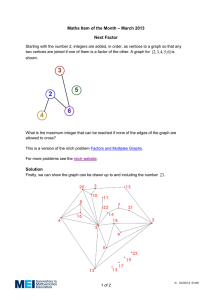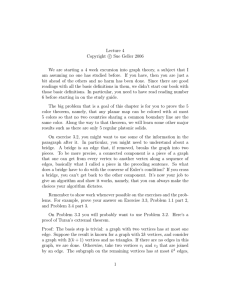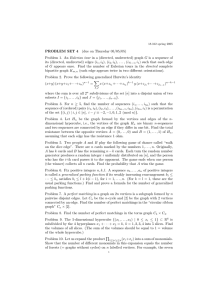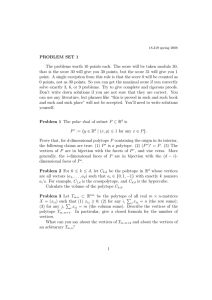18.218 Fall 2016 — Problem Set 2 — Additional problems
advertisement
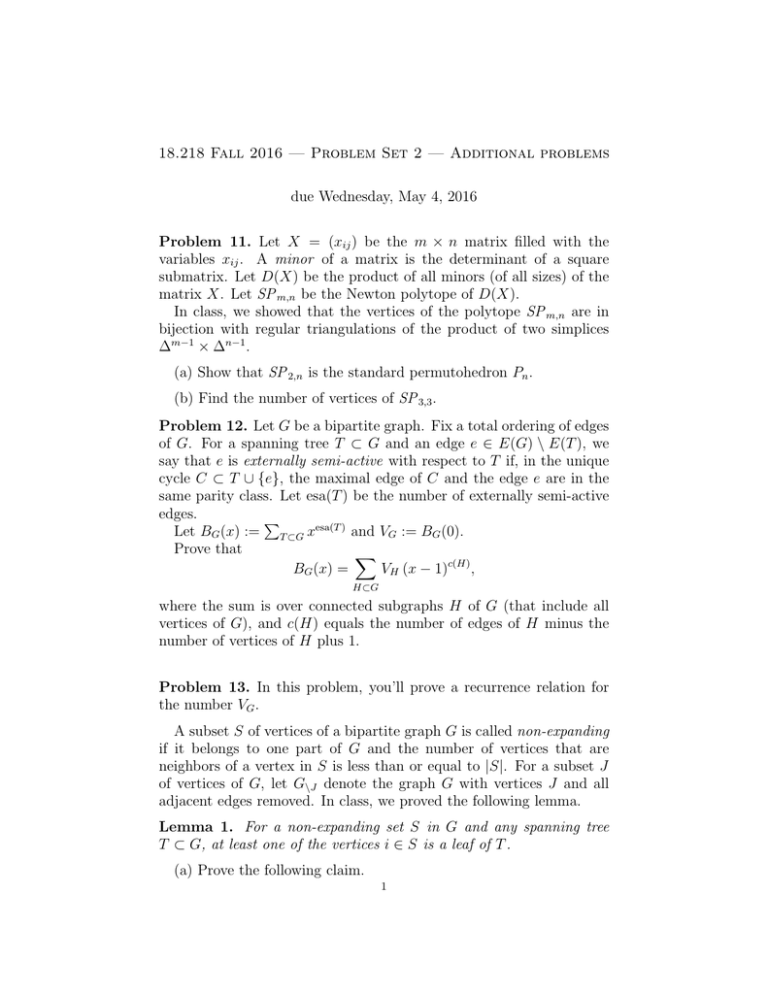
18.218 Fall 2016 — Problem Set 2 — Additional problems
due Wednesday, May 4, 2016
Problem 11. Let X = (xij ) be the m × n matrix filled with the
variables xij . A minor of a matrix is the determinant of a square
submatrix. Let D(X) be the product of all minors (of all sizes) of the
matrix X. Let SP m,n be the Newton polytope of D(X).
In class, we showed that the vertices of the polytope SP m,n are in
bijection with regular triangulations of the product of two simplices
∆m−1 × ∆n−1 .
(a) Show that SP 2,n is the standard permutohedron Pn .
(b) Find the number of vertices of SP 3,3 .
Problem 12. Let G be a bipartite graph. Fix a total ordering of edges
of G. For a spanning tree T ⊂ G and an edge e ∈ E(G) \ E(T ), we
say that e is externally semi-active with respect to T if, in the unique
cycle C ⊂ T ∪ {e}, the maximal edge of C and the edge e are in the
same parity class. Let esa(T ) be the number of externally semi-active
edges.
P
Let BG (x) := T ⊂G xesa(T ) and VG := BG (0).
Prove that
X
BG (x) =
VH (x − 1)c(H) ,
H⊂G
where the sum is over connected subgraphs H of G (that include all
vertices of G), and c(H) equals the number of edges of H minus the
number of vertices of H plus 1.
Problem 13. In this problem, you’ll prove a recurrence relation for
the number VG .
A subset S of vertices of a bipartite graph G is called non-expanding
if it belongs to one part of G and the number of vertices that are
neighbors of a vertex in S is less than or equal to |S|. For a subset J
of vertices of G, let G\J denote the graph G with vertices J and all
adjacent edges removed. In class, we proved the following lemma.
Lemma 1. For a non-expanding set S in G and any spanning tree
T ⊂ G, at least one of the vertices i ∈ S is a leaf of T .
(a) Prove the following claim.
1
2
Lemma 2. For a vertex i of G, let G0 = G\{i} . Let T 0 be a spanning
tree of G0 with esa(T 0 ) = 0. Then there is a unique edge (i, j) of G
such that the tree T obtained from T 0 by adding the edge (i, j) has
esa(T ) = 0.
(b) Use Lemmas 1 and 2, and the inclusion-exclusion principle to show
that, for any non-expanding set S in G, we have
X
VG =
(−1)|J|−1 VG\J .
J⊆S, J6=∅






